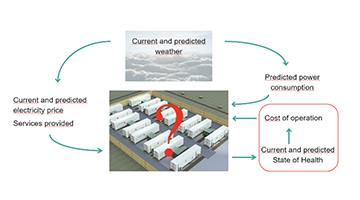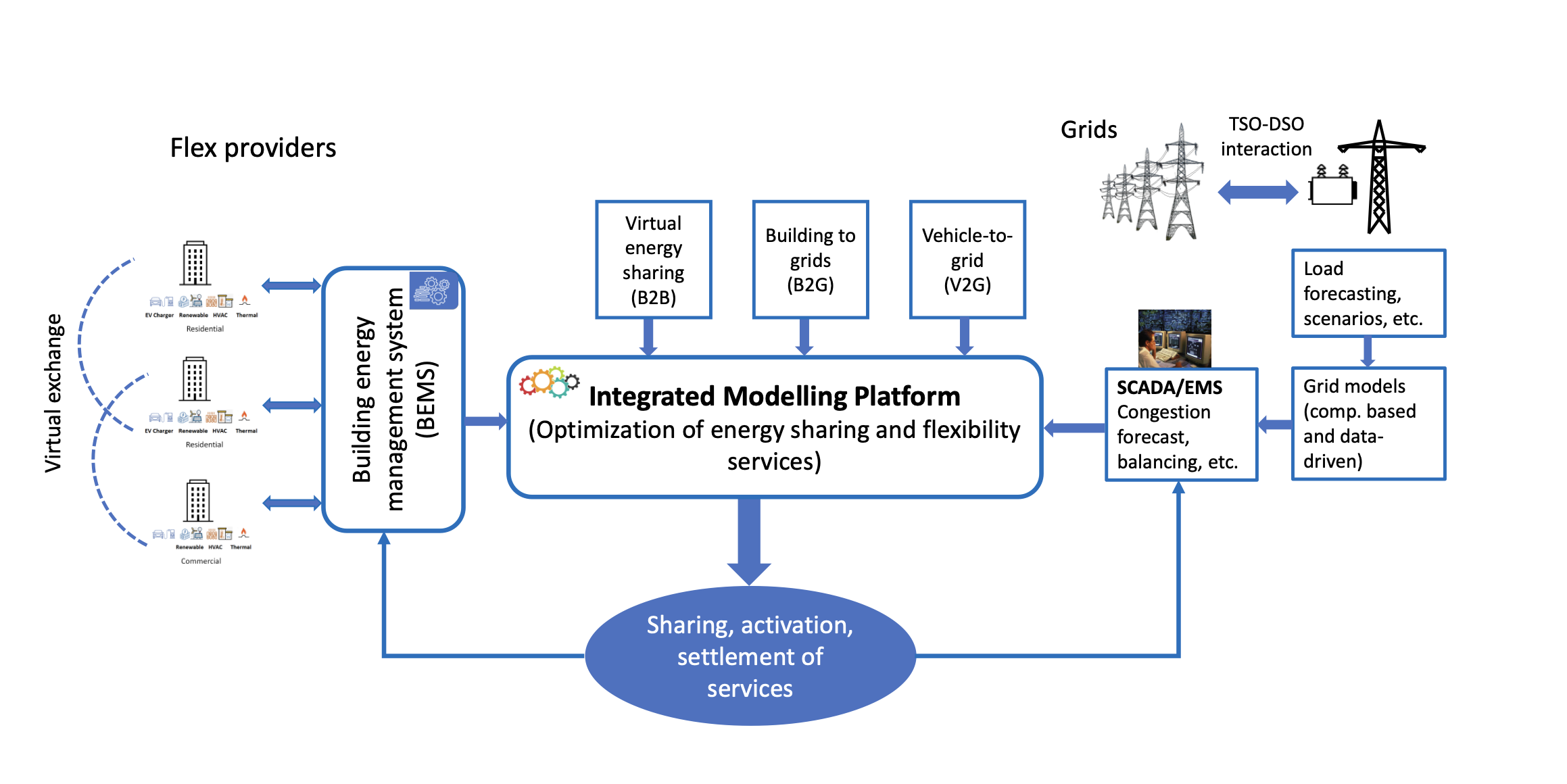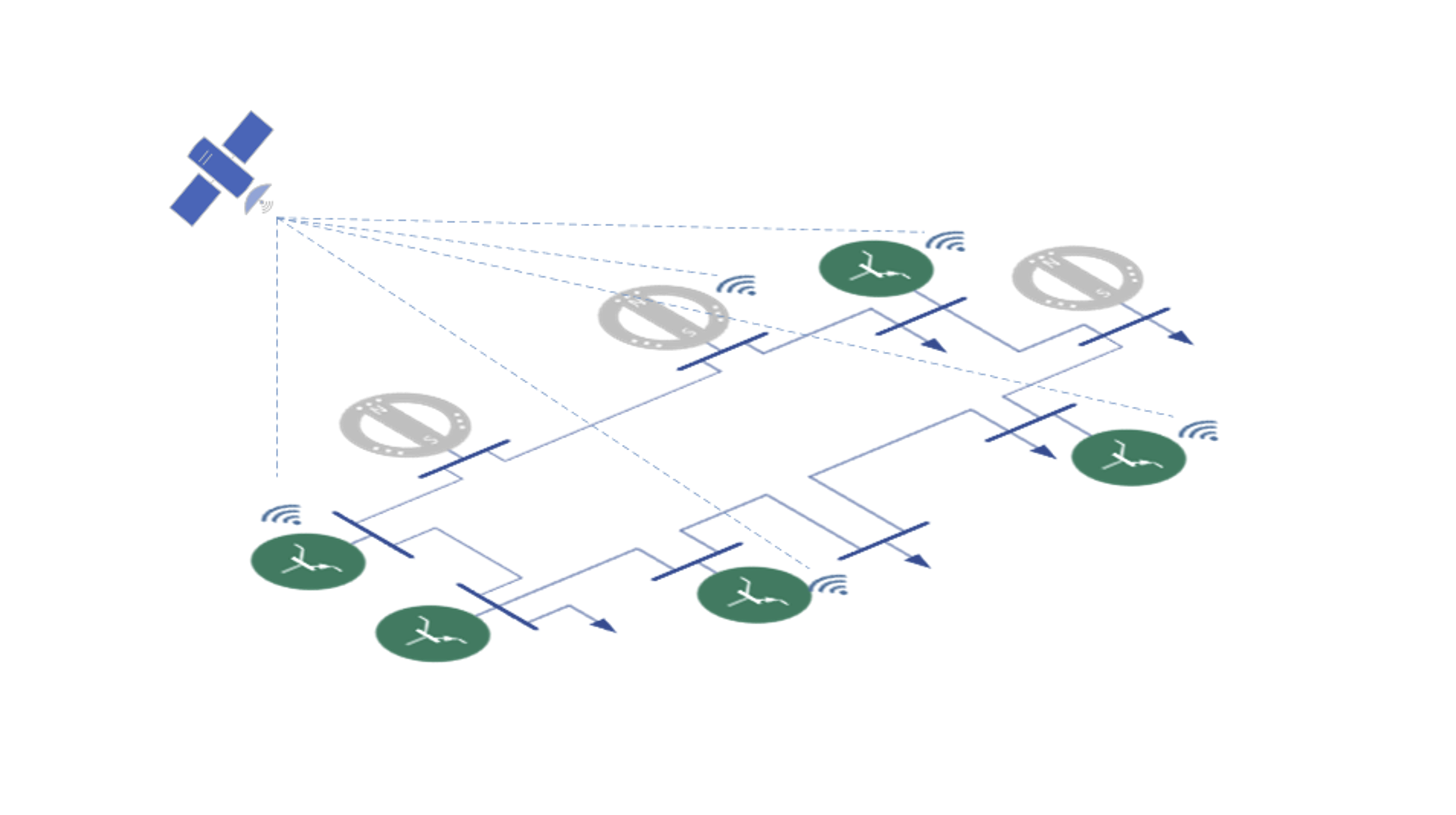Intelligent Energy Management
Research & Innovation Layer 3
The core activities in the Intelligent Energy Management layer are directed towards a holistic analysis, coordination and control of generation, storage and end-use units connected to the electric power systems. The ultimate goal is to achieve a robust energy balance at any time scale and provide a sufficient mitigation to various situations where the actual load and generation deviate from the forecasted and planned setpoints, while, at the same time, minimizing the overall cost/need for investments.
This layer will explore how to effectively gather, process and distribute the available data using innovative connectivity solutions, and how to design novel machine-learning and control methods to achieve the goal. With the combination of distributed measurements, communication and control for the energy management it will be possible to build an energy network that will provide the desired robustness and resilience and at the same time optimally take advantage of the flexibility offered by generation, end-use and storage units. The research in this layer will be based on models, constraints, network configurations and requirements developed in the Systems layer.
Led by: Professor Tomas McKelvey, Chalmers University of Technology.
Research projects
Descriptions of research projects within SESBC.
-
 Optimal usage and properties of 2nd life batteries for energy storage
Optimal usage and properties of 2nd life batteries for energy storageSecond life batteries are batteries that have ended usage in their first application but are in good enough condition to allow a second application. With the expected electrification of the transport sector, there will be very large quantities of such 2nd life batteries of highly different degree of ageing, properties and expected remaining lifetime.
Read more -
 TANDEM: InTelligent Energy DAta MaNagement and Online DEcision Making
TANDEM: InTelligent Energy DAta MaNagement and Online DEcision MakingThe electrification of transportation and industry challenges utilities and grid owners as energy demand rises faster than grid capacity can expand. To address this, TANDEM focuses on enhancing flexibility in energy distribution through efficient big data handling and processing.
Read more -
 Modelling platform for Building-to-Building-to-Grid services
Modelling platform for Building-to-Building-to-Grid servicesBuildings are becoming increasingly active with massive integration of solar photovoltaic (PV) panels, electric vehicle (EV) chargers, battery energy storage, heat-pumps, etc., and could potentially contribute to addressing the challenges. This project will enable buildings to share energy between buildings within a community and to provide flexibility to support the grids.
Read more -
 Storage and flexibility for enhancement of grid capacity
Storage and flexibility for enhancement of grid capacityThe reduction of CO2 emissions motivates the use of renewable energy sources like wind and solar power, which are dependent on weather conditions and thus variable in time. Electricity energy production must always equal consumption at every instant. This project aims to technologies to mitigate energy imbalances due to renewable energy sources.
Read more -
 Synchronized grid-forming systems
Synchronized grid-forming systemsThe aim of this project is to propose and investigate control solutions for grid-connected converters to favor large integration of renewables in the power systems. In particular, the focus is on the development of control strategies that allow enhancement of system’s stability and flexibility in power-electronic dominated grid, by controlling the instantaneous energy flow between selected generating units through bi-directional communication links.
Read more